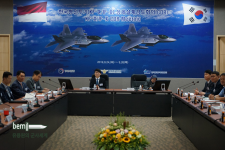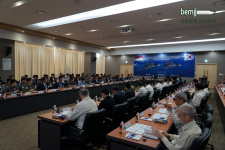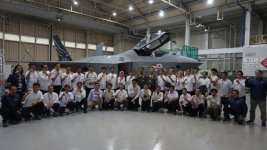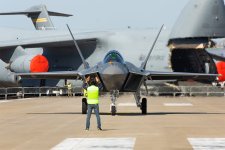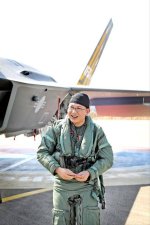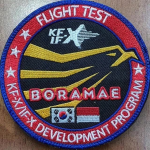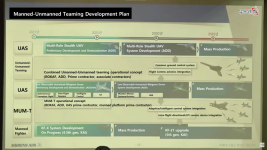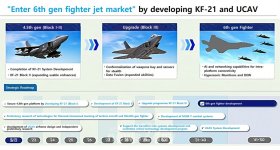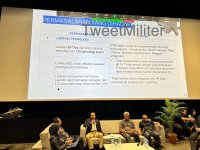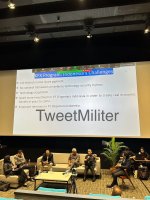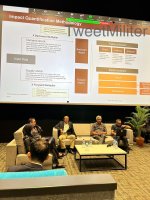Navigation
Install the app
How to install the app on iOS
Follow along with the video below to see how to install our site as a web app on your home screen.
Note: This feature may not be available in some browsers.
More options
Style variation
You are using an out of date browser. It may not display this or other websites correctly.
You should upgrade or use an alternative browser.
You should upgrade or use an alternative browser.
IFX Indonesian Fighter Experiment (KF21/IFX program)
- Thread starter Indos
- Start date
Indos
INT'L MOD
- Jul 25, 2013
- 26,202
- 23,363
- Country of Origin

- Country of Residence

- Thread starter
- #2
Story
--------------
February 6, 2014 (Angkasa/Space Magazine)
KFX / IFX program continued , Government Asked to Immediately Selecting Design

Korea was once considered Indonesia engineer do not understand about the design of a jet fighter. But the notion was quickly turned , when the Indonesian team describes the design and the various inputs. The Indonesian side also the one who finally managed to convince that the aircraft take-off weight of 50,000 pounds must .
Confirmation of the Parliament of South Korea on the resumption of the program KFX / IFX team warmly welcomed designers from Indonesia. They include asking both governments immediately call the engineers involved in preparing work that has been long overdue. They also want the governments of both countries to make sure one of the two designs that have been produced in the Technology Development phase for cultivation in the next phase .
"Program KFX / IFX is a multi - program years , costly, and involve various sectors and foreign partners. For that there must be a definite declaration on it goes. For Indonesia it is important to determine the financing schemes and their human resources planning, "said Dr Rais Zain, M. Eng , KFX / IFX Configuration Design Leader for Angkasa , in late January.
"In the near future Indonesia will also work on the N219 and R - 80. We do not have enough engineers to work three programs, especially KFX / IFX will take place until the 2020s. The government is expected to call home engineers who are now working abroad to come help the regeneration process. Outside there are approximately 200 people . If half of it can be returned to the country, it is enough to help, " added Rais who is also a lecturer at the Faculty of Aerospace Engineering ITB, Bandung.
As reported by the national media, the confirmation of the continuation of the program of making front - liner Korean - Indonesian fighter jets received by the Ministry of Defense on January 3, 2014. Notice is further announced Defense Minister Purnomo Yusgiantoro told reporters, Wednesday, January 8, 2014, on the sidelines of Rapim Kemenhan in Jakarta. Explanations related to exposure delivered weapon system procurement plans in the Strategic Plan II, 2015-2019.
The Indonesian government hopes the project of making the 4.5 generation fighter jet could be done because it would be a referral program to remove the dependence of the transfer of technology from other countries. Besides KFX / IFX, Indonesia is also pursuing a program of making submarines , warships, propellants , rockets, and tank size medium. For submarines, Indonesia is also cooperating with the same country.
Superior to the Su - 35 Program, KFX / IFX was stopped temporarily by Korea's new leader Park Geun - Hye end of 2012 after reviewing the state financially in the country. This prestigious project was worked on since the beginning of 2011, shortly after President Lee Myung - bak and President Susilo Bambang Yudhoyono confirmed the bilateral cooperation in the defense field in Jakarta. From the Technology Development Phase that has been completed, a team of scientists has completed a number of conical design that later became two.
The two designs is a model of the stealth fighter jet -winning twin-engine air superiority with horizontally - tails in the back, and the other one is with canards on the front. "Each has consequences different financing and partners. Thus , it must first be decided which one is selected. It is important that when followed, all parties are ready to do it , "said Rais Zain , whose day-to- day lecturer at the Faculty of Engineering, Aerospace Engineering,ITB, Bandung.
As stated Wamenhan Sjafrie, Korean parliament has prepared 20 million U.S. dollars (temporary , Indonesia : $ 5 million) to continue this program in 2015. At that time , the team will go to the Engineering Manufacturing Development Phase. In addition must have a high thrust engine with a power to be able to fight in the air, the aircraft must also have weapons stored in the internal weapons bay , the data - link capable of randomizing communications, advanced radar target voters, and anti - jamming device.
The prototype is expected to finish by the end of the Strategic Plan II . Even if there are things that need to be criticized , it is a matter of operation requirements are much more determined the Korean Air Force . This was inevitable because the Korean bear 80 percent of the funding, and the country actually have a real enemy. This program is targeted to spawn a jet fighter with performance equivalent or superior to the opponent fighter jets which are the Sukhoi Su - 35.
Prerequisites requirement dismissed the proposed counter designs by KAI ( Korean Aerospace Industrie) recently, which is intended to cut development costs. In the configuration ( see Space, December 2013 ), looks KFX type E is only one engine powered with weapons outside the radar sweep prone opponent.
Angkasa examine admiration of ADD ( Agency for Defense Development, Defence Research and Development Agency of Korea ) submitted to the Indonesian engineer team. Initially, the team assumes Korea really had no idea about the design of Indonesian fighter jets.
However, the assumption was turned when Indonesian engineers began to describe the design and the various inputs to the design of Korea. The Indonesian side also who ultimately ensure that the aircraft must have a takeoff weight of 50,000 pounds.(A.Darmawan/Angkasa magazine).
--------------
February 6, 2014 (Angkasa/Space Magazine)
KFX / IFX program continued , Government Asked to Immediately Selecting Design
Korea was once considered Indonesia engineer do not understand about the design of a jet fighter. But the notion was quickly turned , when the Indonesian team describes the design and the various inputs. The Indonesian side also the one who finally managed to convince that the aircraft take-off weight of 50,000 pounds must .
Confirmation of the Parliament of South Korea on the resumption of the program KFX / IFX team warmly welcomed designers from Indonesia. They include asking both governments immediately call the engineers involved in preparing work that has been long overdue. They also want the governments of both countries to make sure one of the two designs that have been produced in the Technology Development phase for cultivation in the next phase .
"Program KFX / IFX is a multi - program years , costly, and involve various sectors and foreign partners. For that there must be a definite declaration on it goes. For Indonesia it is important to determine the financing schemes and their human resources planning, "said Dr Rais Zain, M. Eng , KFX / IFX Configuration Design Leader for Angkasa , in late January.
"In the near future Indonesia will also work on the N219 and R - 80. We do not have enough engineers to work three programs, especially KFX / IFX will take place until the 2020s. The government is expected to call home engineers who are now working abroad to come help the regeneration process. Outside there are approximately 200 people . If half of it can be returned to the country, it is enough to help, " added Rais who is also a lecturer at the Faculty of Aerospace Engineering ITB, Bandung.
As reported by the national media, the confirmation of the continuation of the program of making front - liner Korean - Indonesian fighter jets received by the Ministry of Defense on January 3, 2014. Notice is further announced Defense Minister Purnomo Yusgiantoro told reporters, Wednesday, January 8, 2014, on the sidelines of Rapim Kemenhan in Jakarta. Explanations related to exposure delivered weapon system procurement plans in the Strategic Plan II, 2015-2019.
The Indonesian government hopes the project of making the 4.5 generation fighter jet could be done because it would be a referral program to remove the dependence of the transfer of technology from other countries. Besides KFX / IFX, Indonesia is also pursuing a program of making submarines , warships, propellants , rockets, and tank size medium. For submarines, Indonesia is also cooperating with the same country.
Superior to the Su - 35 Program, KFX / IFX was stopped temporarily by Korea's new leader Park Geun - Hye end of 2012 after reviewing the state financially in the country. This prestigious project was worked on since the beginning of 2011, shortly after President Lee Myung - bak and President Susilo Bambang Yudhoyono confirmed the bilateral cooperation in the defense field in Jakarta. From the Technology Development Phase that has been completed, a team of scientists has completed a number of conical design that later became two.
The two designs is a model of the stealth fighter jet -winning twin-engine air superiority with horizontally - tails in the back, and the other one is with canards on the front. "Each has consequences different financing and partners. Thus , it must first be decided which one is selected. It is important that when followed, all parties are ready to do it , "said Rais Zain , whose day-to- day lecturer at the Faculty of Engineering, Aerospace Engineering,ITB, Bandung.
As stated Wamenhan Sjafrie, Korean parliament has prepared 20 million U.S. dollars (temporary , Indonesia : $ 5 million) to continue this program in 2015. At that time , the team will go to the Engineering Manufacturing Development Phase. In addition must have a high thrust engine with a power to be able to fight in the air, the aircraft must also have weapons stored in the internal weapons bay , the data - link capable of randomizing communications, advanced radar target voters, and anti - jamming device.
The prototype is expected to finish by the end of the Strategic Plan II . Even if there are things that need to be criticized , it is a matter of operation requirements are much more determined the Korean Air Force . This was inevitable because the Korean bear 80 percent of the funding, and the country actually have a real enemy. This program is targeted to spawn a jet fighter with performance equivalent or superior to the opponent fighter jets which are the Sukhoi Su - 35.
Prerequisites requirement dismissed the proposed counter designs by KAI ( Korean Aerospace Industrie) recently, which is intended to cut development costs. In the configuration ( see Space, December 2013 ), looks KFX type E is only one engine powered with weapons outside the radar sweep prone opponent.
Angkasa examine admiration of ADD ( Agency for Defense Development, Defence Research and Development Agency of Korea ) submitted to the Indonesian engineer team. Initially, the team assumes Korea really had no idea about the design of Indonesian fighter jets.
However, the assumption was turned when Indonesian engineers began to describe the design and the various inputs to the design of Korea. The Indonesian side also who ultimately ensure that the aircraft must have a takeoff weight of 50,000 pounds.(A.Darmawan/Angkasa magazine).
Program KFX/IFX Dilanjutkan, Pemerintah Diminta Segera Memilih Desain
Angkasa Online - Majalah Aviasi dan Militer
web.archive.org
Indos
INT'L MOD
- Jul 25, 2013
- 26,202
- 23,363
- Country of Origin

- Country of Residence

- Thread starter
- #3
Indonesian engineers stayed in Korea until design phase is completed, despite Indonesian government delayed the payment due to economic difficulty related to weaker currency condition.
------------------------------------------------
2019 October news

All News 11:49 October 07, 2019
SHARE LIKE SAVE PRINT
FONT SIZE
SEOUL, Oct. 7 (Yonhap) -- Indonesia is in arrears on its payment obligations for a joint project with South Korea to develop a next-generation fighter jet, citing financial problems, data by the arms procurement agency showed Monday.
Indonesia is a partner for South Korea's so-called KF-X project to develop a homegrown fighter aircraft in an effort to procure combat aircraft for its own air force and boost its aerospace industry. The country agreed to shoulder 20 percent of the development cost of the 8.8 trillion-won (US$7.36 billion) project.
But the Southeast Asian country failed to pay 301 billion won it was supposed to pay as of end-September, according to the data by the Defense Acquisition Program Administration (DAPA). So far, it has paid 272.2 billion won.
"Following the Indonesian president's request in 2018 for talks on the payment, South Korea set up a pan-government consultative body and has been holding working-level discussions with Jakarta," DAPA said, noting that the two sides have met four times so far this year.
"Despite such a delay in payment, the Indonesian side has continued to send its researchers to South Korea to take part in the development process," Rep. Kim Joong-ro of the minor opposition Bareunmirae Party said during a parliamentary audit into the administration, voicing concern about technology leaks.
As of July, 114 Indonesian engineers were sent to South Korea to work with Korea Aerospace Industries Co. (KAI), the country's sole aircraft manufacturer, to design and make a prototype of the fighter, according to a DAPA official.
Last month, DAPA confirmed that the design for the combat jet met all military requirements, allowing the project to go on to the next phase of constructing a prototype.
The prototype will be ready in the first half of 2021, and the agency is eyeing 2026 for the completion of development, which began in 2016, according to DAPA.
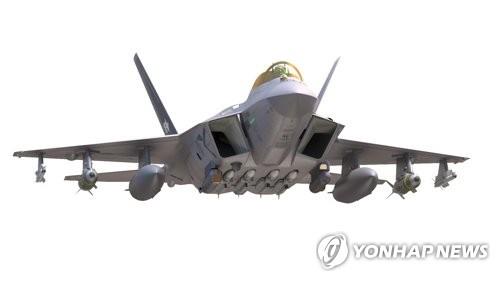
 en.yna.co.kr
en.yna.co.kr
------------------------------------------------
2019 October news
Indonesia delays payment for S. Korea's fighter development project
All News 11:49 October 07, 2019
SHARE LIKE SAVE PRINT
FONT SIZE
SEOUL, Oct. 7 (Yonhap) -- Indonesia is in arrears on its payment obligations for a joint project with South Korea to develop a next-generation fighter jet, citing financial problems, data by the arms procurement agency showed Monday.
Indonesia is a partner for South Korea's so-called KF-X project to develop a homegrown fighter aircraft in an effort to procure combat aircraft for its own air force and boost its aerospace industry. The country agreed to shoulder 20 percent of the development cost of the 8.8 trillion-won (US$7.36 billion) project.
But the Southeast Asian country failed to pay 301 billion won it was supposed to pay as of end-September, according to the data by the Defense Acquisition Program Administration (DAPA). So far, it has paid 272.2 billion won.
"Following the Indonesian president's request in 2018 for talks on the payment, South Korea set up a pan-government consultative body and has been holding working-level discussions with Jakarta," DAPA said, noting that the two sides have met four times so far this year.
"Despite such a delay in payment, the Indonesian side has continued to send its researchers to South Korea to take part in the development process," Rep. Kim Joong-ro of the minor opposition Bareunmirae Party said during a parliamentary audit into the administration, voicing concern about technology leaks.
As of July, 114 Indonesian engineers were sent to South Korea to work with Korea Aerospace Industries Co. (KAI), the country's sole aircraft manufacturer, to design and make a prototype of the fighter, according to a DAPA official.
Last month, DAPA confirmed that the design for the combat jet met all military requirements, allowing the project to go on to the next phase of constructing a prototype.
The prototype will be ready in the first half of 2021, and the agency is eyeing 2026 for the completion of development, which began in 2016, according to DAPA.

Indonesia delays payment for S. Korea's fighter development project | Yonhap News Agency
SEOUL, Oct. 7 (Yonhap) -- Indonesia is in arrears on its payment obligations for a joint p...
Indos
INT'L MOD
- Jul 25, 2013
- 26,202
- 23,363
- Country of Origin

- Country of Residence

- Thread starter
- #4
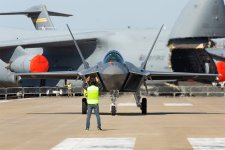
What was the design process for the KF-X/IF-X?
Engineers who designed the KF-X/IF-X were divided into several sections, namely configuration, structure, propulsion, systems and aerodynamics.
The engineer working on the configuration section will work first, determining the general dimensions of the aircraft (length, wingspan, etc.), general wing platform, type of empennage, calculations about stealth, armament placement, etc.
When complete, the data will be given to each section for follow-up. For example, in the structural section, engineers must create a wing design based on the limitations created by the configuration engineer (wing length, type of wing planform, wing angle, armament pylon position, etc.) as well as the limitation conditions provided by the aerodynamics engineer.
Apart from that, the structural engineer must determine two different types of materials with different calculations to meet the limits set by the Design Requirements and Objective (DRO), such as the maximum G-load of the aircraft, the maximum weight of weapons that can be carried by each pylon, etc. .
The two types of calculations using different materials will then be given to the DPR (both South Korea and Indonesia) to determine which material will be selected. The selection of materials by the DPR takes many factors into account, starting from the availability of raw resources, the ability to process these raw resources, employment, economic turnover, to cost effectiveness.
What are Indonesia's contributions to the design process?
Indonesia has engineers who work on each part together with South Korean engineers. For example, there are 10 engineers working on structural parts, of which five come from Indonesia. This is done so that Indonesia can gain knowledge from every part that is carried out.
Designing a product must go through the stages of Conceptual Study, Conceptual Design, Preliminary Design, Detailed Design, Prototyping, and finally Mass Production. The Preliminary Design part of the KF-X/IF-X was carried out by engineers who are experienced (40 years and over) and have participated in several previous national strategic projects.
The Preliminary Design stage was successfully completed within 1.5 years.This time is considered very short if you design an aircraft from 0 (starting from scratch) with limited funding. The next stage (detailed design and others) was then continued by engineers from PTDI.
What are Indonesia's advantages compared to South Korea and Indonesia's reciprocity towards the KF-X/IF-X project?
Indonesia has advantages in terms of structure and systems compared to South Korea. Meanwhile, Indonesian experts are in an equal condition in terms of knowledge in the field of composite materials, but Indonesia is behind in terms of manufacturing.
Then, why can South Korea make the T-50 Golden Eagle light trainer jet, but can't make a cargo plane so it has to overhaul the CN-235?
In short, like this, it's like South Korea, through KAI, is an expert in making sports cars (T-50) and Indonesia, through PTDI, is skilled at making transport trucks (CN-235). A company that is skilled at making sports cars may not necessarily be able to make transport trucks because they have different goals and needs even though they are both wheeled land vehicles (in this case planes).KAI itself was able to make the T-50 after receiving assistance from Lockheed-Martin.
Does Indonesia get access to sensitive technology from KF-X/IF-X such as radar, etc.?
No, Indonesia does not get access to sensitive technology from KF-X/IF-X because the sensitive technology comes from third party countries (US, Israel, etc.). While in South Korea, all engineers from Indonesia, including the test pilots who were sent, were under strict supervision by the South Korean NIS (National Intelligence Service).
What contribution does Indonesia have in the production line of the KF-X/IF-X?
Currently, Indonesia has a role in producing components from KF-X/IF-X made from carbon composition, such as components for flight control surfaces.In order to have the ability to produce components from carbon composites, PTDI has purchased two Autoclave machines with diameters of 3-meter and 1.5-meter and equipped with CCA (controlled clean room). This is done so that production from KF-X/IF-X also depends on Indonesia.
Average salary received by Indonesian Engineers who participated in the development of KF-X/IF-X
Because nominal mentions are considered sensitive, what is presented here is a comparison percentage. During the KF-X/IF-X development phase, participating Indonesian Engineers were paid 25% less than South Korean Engineers working on the same part of the program.
Meanwhile, South Korean Engineers are paid 20% less than United States Engineers, which means Indonesian Engineers are paid 40% less than United States Engineers.Even though the salary of Indonesian Engineers involved in the KF-X/IF-X Program looks lower than others, the salary is still 50% higher (1.5x) the salary of Indonesian Aerospace Engineers working on domestic programs.
Indos
INT'L MOD
- Jul 25, 2013
- 26,202
- 23,363
- Country of Origin

- Country of Residence

- Thread starter
- #5
What was the design process for the KF-X/IF-X?
Engineers who designed the KF-X/IF-X were divided into several sections, namely configuration, structure, propulsion, systems and aerodynamics.
The engineer working on the configuration section will work first, determining the general dimensions of the aircraft (length, wingspan, etc.), general wing platform, type of empennage, calculations about stealth, armament placement, etc.
When complete, the data will be given to each section for follow-up. For example, in the structural section, engineers must create a wing design based on the limitations created by the configuration engineer (wing length, type of wing planform, wing angle, armament pylon position, etc.) as well as the limitation conditions provided by the aerodynamics engineer.
Apart from that, the structural engineer must determine two different types of materials with different calculations to meet the limits set by the Design Requirements and Objective (DRO), such as the maximum G-load of the aircraft, the maximum weight of weapons that can be carried by each pylon, etc. .
The two types of calculations using different materials will then be given to the DPR (both South Korea and Indonesia) to determine which material will be selected. The selection of materials by the DPR takes many factors into account, starting from the availability of raw resources, the ability to process these raw resources, employment, economic turnover, to cost effectiveness.
What are Indonesia's contributions to the design process?
Indonesia has engineers who work on each part together with South Korean engineers. For example, there are 10 engineers working on structural parts, of which five come from Indonesia. This is done so that Indonesia can gain knowledge from every part that is carried out.
Designing a product must go through the stages of Conceptual Study, Conceptual Design, Preliminary Design, Detailed Design, Prototyping, and finally Mass Production. The Preliminary Design part of the KF-X/IF-X was carried out by engineers who are experienced (40 years and over) and have participated in several previous national strategic projects.
The Preliminary Design stage was successfully completed within 1.5 years.This time is considered very short if you design an aircraft from 0 (starting from scratch) with limited funding. The next stage (detailed design and others) was then continued by engineers from PTDI.
What are Indonesia's advantages compared to South Korea and Indonesia's reciprocity towards the KF-X/IF-X project?
Indonesia has advantages in terms of structure and systems compared to South Korea. Meanwhile, Indonesian experts are in an equal condition in terms of knowledge in the field of composite materials, but Indonesia is behind in terms of manufacturing.
Then, why can South Korea make the T-50 Golden Eagle light trainer jet, but can't make a cargo plane so it has to overhaul the CN-235?
In short, like this, it's like South Korea, through KAI, is an expert in making sports cars (T-50) and Indonesia, through PTDI, is skilled at making transport trucks (CN-235). A company that is skilled at making sports cars may not necessarily be able to make transport trucks because they have different goals and needs even though they are both wheeled land vehicles (in this case planes).KAI itself was able to make the T-50 after receiving assistance from Lockheed-Martin.
Does Indonesia get access to sensitive technology from KF-X/IF-X such as radar, etc.?
No, Indonesia does not get access to sensitive technology from KF-X/IF-X because the sensitive technology comes from third party countries (US, Israel, etc.). While in South Korea, all engineers from Indonesia, including the test pilots who were sent, were under strict supervision by the South Korean NIS (National Intelligence Service).
What contribution does Indonesia have in the production line of the KF-X/IF-X?
Currently, Indonesia has a role in producing components from KF-X/IF-X made from carbon composition, such as components for flight control surfaces.In order to have the ability to produce components from carbon composites, PTDI has purchased two Autoclave machines with diameters of 3-meter and 1.5-meter and equipped with CCA (controlled clean room). This is done so that production from KF-X/IF-X also depends on Indonesia.
Average salary received by Indonesian Engineers who participated in the development of KF-X/IF-X
Because nominal mentions are considered sensitive, what is presented here is a comparison percentage. During the KF-X/IF-X development phase, participating Indonesian Engineers were paid 25% less than South Korean Engineers working on the same part of the program.
Meanwhile, South Korean Engineers are paid 20% less than United States Engineers, which means Indonesian Engineers are paid 40% less than United States Engineers.Even though the salary of Indonesian Engineers involved in the KF-X/IF-X Program looks lower than others, the salary is still 50% higher (1.5x) the salary of Indonesian Aerospace Engineers working on domestic programs.

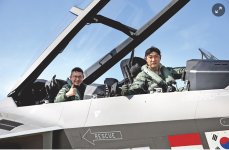
Indonesia's contribution to the development of the KF-21 Boramae.
SUPER Publisher Note: This article was written together with colleagues from the Facebook page, discussing non-sensitive information obtained from PTDI publications as well as interviews with Indonesian engineers who are directly involved with the KFX/IFX program.
------Due to the renewed popularity of the KF-21 news due to the United Arab Emirates' interest in the South Korean fighter aircraft project, I feel it would be appropriate if we looked at what contribution Indonesia has made to this program.
The KF-21 is a 4.5 generation fighter aircraft jointly developed by South Korea and Indonesia with the assistance of third party countries. The KF-21 successfully made its first flight on July 19 2022. However, the development process for the KF-21 under the name of the KF-X/IF-X Program did not always run smoothly.
So far, there has been a lot of negative sentiment and many questions have arisen about Indonesia's contribution to the KF-X/IF-X program.Many people think that Indonesia is just a "parasite" who wants to take information/technology without giving anything in return.
However, is this true?
The following is non-sensitive information obtained from PTDI publications as well as interviews with Engineers from Indonesia who were involved in one of the development stages of the KF-X/IF-X Program.This information will also be presented in the form of an FAQ (Frequently Asked Questions) with direct answers
Indos
INT'L MOD
- Jul 25, 2013
- 26,202
- 23,363
- Country of Origin

- Country of Residence

- Thread starter
- #7
Some of design work (for double seat version) and manufacturing work of components of KF21/IFX prototypes conducted in Bandung, Indonesia, in 2020.
This the activities conducted by some engineers after 116 Indonesian engineers come back home in March 2020 after design phase is completed in 2019 September (CDR).
Most of the engineers though were working for domestic program like Elang Hitam MALE UCAV and N 219 program (Improvement and N 219 Amphibious version)
Single seat and Double seat KF21 is not really different, only in the areas on canopy that we see differences.
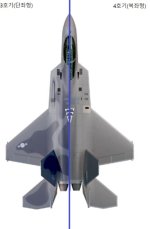
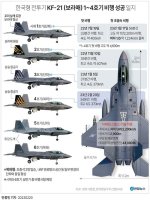
This the activities conducted by some engineers after 116 Indonesian engineers come back home in March 2020 after design phase is completed in 2019 September (CDR).
Most of the engineers though were working for domestic program like Elang Hitam MALE UCAV and N 219 program (Improvement and N 219 Amphibious version)
Single seat and Double seat KF21 is not really different, only in the areas on canopy that we see differences.


Indos
INT'L MOD
- Jul 25, 2013
- 26,202
- 23,363
- Country of Origin

- Country of Residence

- Thread starter
- #8
Just want to make correction, the development areas includes :
Aerodynamics, configuration design, system engineering, subsystem, propulsion, flight control, air combat system, project management, structure analysis, and design structure.
ITB is also part of the research team and has collaborated with Indonesian Aerospace in IFX research as well
Followings are some topics that are developed by Flight Physics Research Group :
Top researches :
Aerodynamics, configuration design, system engineering, subsystem, propulsion, flight control, air combat system, project management, structure analysis, and design structure.
ITB is also part of the research team and has collaborated with Indonesian Aerospace in IFX research as well
Flight Physics Research Group
General Information
Flight Physics Research Group is a merger of two fields of studies, Aerodynamics, which studies draft around flying objects including aero-elasticity and aero-acoustic, and Flight Mechanics, which studies, achievement, control, navigation, and flying guide, as well as the integration and the application of those fields in designing aircraft and operating airplane. The members of the group can apply their skills to work on civilian aircraft, military aircraft, helicopters, UAVs, rockets, missiles, and even the movement of flying insects and birds.Followings are some topics that are developed by Flight Physics Research Group :
- Computational Fluid Dynamics (CFD)
- Experimental techniques
- Airplane wings and high lift devices design
- Aero-elasticity and Aero-acoustic
- Wind tunnel and flight testing/technology
- Rocket and Propulsion System
- Astrodinamcis and sattelite control
- Designing and analizing flying achievement, dynamics, and control
- Simulation technology
Top researches :
- Particle Image Velocimetry (PIV) System
- Wing in Surface Effect (WiSE) Prototype and Simulator
- Mini turbo jet engine prototype
- UAV autonomous system
- Simulations of rocket and sattelite dynamics and control
- Development of civilian aircraft of PT DI (CN-235, N250, N2130, N219) and military aircraft (IFX/KFX) (collaboration of Indonesia and South Korea
Indos
INT'L MOD
- Jul 25, 2013
- 26,202
- 23,363
- Country of Origin

- Country of Residence

- Thread starter
- #11
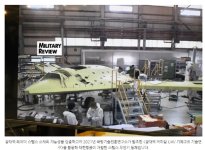

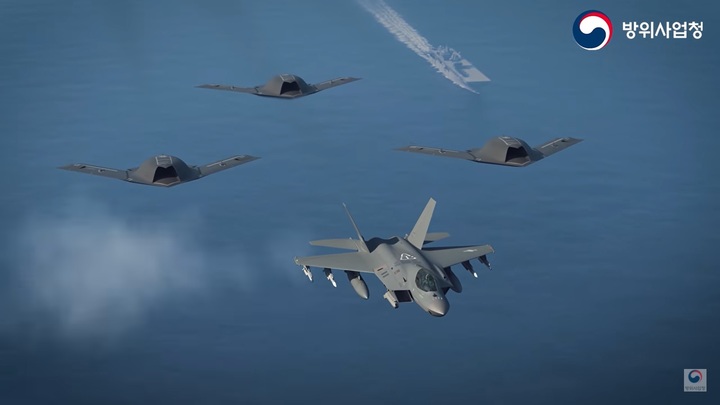
軍, KF-21·가오리-X 유무인 복합 운용 도입 공식화
[서울=뉴시스] 박대로 기자 = 군이 국산 전투기 KF-21과 국산 무인 스텔스 전투기 가오리-X를 복합 운용하겠다는 계획을 공식화했다
 www.newsis.com
www.newsis.com
Indos
INT'L MOD
- Jul 25, 2013
- 26,202
- 23,363
- Country of Origin

- Country of Residence

- Thread starter
- #12
Hanwha begins fighter jet engine development, aiming for world's 7th self-sufficient nation
By Kim Ja-ah,Kim Mi-geon
Published 2024.06.06. 09:06
Updated 2024.06.06. 13:30

Hanwha begins fighter jet engine development, aiming for world’s 7th self-sufficient nation
Hanwha begins fighter jet engine development, aiming for worlds 7th self-sufficient nation
Indos
INT'L MOD
- Jul 25, 2013
- 26,202
- 23,363
- Country of Origin

- Country of Residence

- Thread starter
- #13
During TD phase

RI sending KFX jet-fighter production team to South Korea
Senin, 11 Juli 2011
18:22 WIB | 5.150 Views
Jakarta (ANTARA News) - Indonesia is sending a KFX warplane production engineering team to South Korea as part of a cooperation agreement between the two nations to produce jet-fighters, a defense ministry official said here on Monday.
The team is composed of personnel from the Indonesian Air Force, Bandung-based Institute of Technology (ITB) and Indonesian aircraft maker PT Dirgantara Indonesia (DI).
Defense Ministry Secretary General Rear Marshal Erris Heriyanto said the team received an award from Defense Minister Purnomo Yusgiantoro here on Monday.
Erris said that Indonesia and South Korea had agreed to cooperate in the production of KFX warplanes in Seoul, South Korea, on July 15, 2010.
Virtually, the KFX jet-fighter production project is an old project by the Republic of Korea Air Force (ROKAF) which only now could it be realized.
The idea of the project came from South Korean President Kim Dae Jung on March 2001 to replace older planes like F-4D/E Phantom II and F-5E/F Tiger.
Compared with F-16, KFX is projected to have an attack radius 50 percent higher, better avionic system and better anti radar (stealth) capability.
Erris said that Indonesia tried to do its best to meet its need for main weaponry system, including in the development of warplanes.
Therefore, Indonesia agreed to cooperate with South Korea, he added.
On the occasion, the two sides agreed that 80 percent of the funding would borne by partner country while the remaining 20 percent by Indonesia.
He said that the cooperation for the development of the 4.5 generation warplanes would be carried out in three stages, namely technological development in the 2011-2012 period, engineering and manufacturing and the third stage is the production phase.
Erris said that both sides agreed to produce some 150 to 200 units of KFX of which Indonesia would get 50 units.
"The three units would meet the need of three combat air-borne squadrons," he said.
(Uu.A014/HAJM)

 en.antaranews.com
en.antaranews.com

RI sending KFX jet-fighter production team to South Korea
Senin, 11 Juli 2011
18:22 WIB | 5.150 Views
Jakarta (ANTARA News) - Indonesia is sending a KFX warplane production engineering team to South Korea as part of a cooperation agreement between the two nations to produce jet-fighters, a defense ministry official said here on Monday.
The team is composed of personnel from the Indonesian Air Force, Bandung-based Institute of Technology (ITB) and Indonesian aircraft maker PT Dirgantara Indonesia (DI).
Defense Ministry Secretary General Rear Marshal Erris Heriyanto said the team received an award from Defense Minister Purnomo Yusgiantoro here on Monday.
Erris said that Indonesia and South Korea had agreed to cooperate in the production of KFX warplanes in Seoul, South Korea, on July 15, 2010.
Virtually, the KFX jet-fighter production project is an old project by the Republic of Korea Air Force (ROKAF) which only now could it be realized.
The idea of the project came from South Korean President Kim Dae Jung on March 2001 to replace older planes like F-4D/E Phantom II and F-5E/F Tiger.
Compared with F-16, KFX is projected to have an attack radius 50 percent higher, better avionic system and better anti radar (stealth) capability.
Erris said that Indonesia tried to do its best to meet its need for main weaponry system, including in the development of warplanes.
Therefore, Indonesia agreed to cooperate with South Korea, he added.
On the occasion, the two sides agreed that 80 percent of the funding would borne by partner country while the remaining 20 percent by Indonesia.
He said that the cooperation for the development of the 4.5 generation warplanes would be carried out in three stages, namely technological development in the 2011-2012 period, engineering and manufacturing and the third stage is the production phase.
Erris said that both sides agreed to produce some 150 to 200 units of KFX of which Indonesia would get 50 units.
"The three units would meet the need of three combat air-borne squadrons," he said.
(Uu.A014/HAJM)

RI sending KFX jet-fighter production team to South Korea
Indonesia is sending a KFX warplane production engineering team to South Korea as part of a cooperation agreement between the two nations to produce ...
Indos
INT'L MOD
- Jul 25, 2013
- 26,202
- 23,363
- Country of Origin

- Country of Residence

- Thread starter
- #14
S. Korea Selects Hanwha To Supply AESA Radar For Loyal Wingman
Chen ChuanrenJune 12, 2024
South Korea has selected Hanwha Systems as the preferred manufacturer to supply active, electronically scanned array (AESA) radar for the Korean Unmanned System-Loyal Wingman (KUS-LW) program. Hanwha will integrate its new AESA radar, featuring the “tile” type transmitter/receive (T/R) block design...
S. Korea Selects Hanwha To Supply AESA Radar For Loyal Wingman | Aviation Week Network
Hanwha will integrate its new AESA radar, featuring the "tile" type transmitter/receive (T/R) block design, on to the KUS-LW.

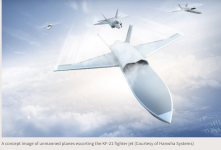
Hanwha Systems Co., a South Korean aerospace and defense contractor, has been picked as a preferred developer by the state-run Korea Institute for Defense Analyses of advanced radars optimized for unmanned planes to escort KF-21 fighter jets, the company said on Tuesday.
Hanwha is aiming to develop a new model of an active electronically scanned array (AESA), a phased array antenna, to be mounted on both the KF-21 and its unmanned escort planes as well as other light combat aircraft, by the end of 2026.
KF-21 is the first supersonic fighter developed by South Korea's homegrown technology and is scheduled for mass production this year. Hanwha is slated to produce AESA radars tailored to the fighter jets this year.
Dubbed the eyes of aircraft, AESA radars are capable of detecting and tracking enemy aircraft, as well as controlling guided missiles.
The new radar to be developed will be more compact and lightweight than the conventional AESA thanks to air cooling technology used to cool radars using only air.
Upon its development, it will become South Korea’s first AESA radar based on air cooling technology.
Without conventional cooling equipment, the new radar can reduce weight and volume. It will be made even slimmer with the brick-shaped transmit receive block (TRB), a key component of the radar, compressed into a thinner shape.

Hanwha picked to develop KF-21’s unmanned escort plane radars - KED Global
Hanwha Systems Co., a South Korean aerospace and defense contractor, has been picked as a preferred developer by the state-run Korea Institute for Defense Anal
www.kedglobal.com
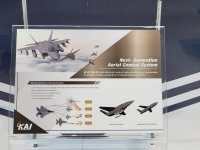
Users who are viewing this thread
Total: 1 (members: 0, guests: 1)
Pakistan Defence Latest
Country Watch Latest
-
-
-
-
Satellite Image Shows China’s Newest Heliport Near India’s “Fishtail”; Can Be Used To Quickly Deploy PLA To LAC (10 Viewers)
- Latest: FOOLS_NIGHTMARE
-
China is experimenting with Starlink satellites to detect stealth aircraft (1 Viewer)
- Latest: Hendarto
Latest Posts
-
Hundreds of Hezbollah fighters injured after their pagers/phones explode in presumed Israeli operation (57 Viewers)
- Latest: Bharatah
-
-
Dark Warning from Maulana Fazlur Rahman: 'Two Provinces Could Break Away if Crisis Continues (16 Viewers)
- Latest: Cash gk
-
-

